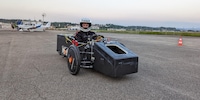
Background information
The solar racing car drives - but still without solar power
by Martin Jungfer

When the world’s largest solar-powered car race takes place in October, a team from ETH Zurich will be taking part. I’ve reported on their efforts before. Now, the car roof, fitted with solar cells, has been connected to the chassis.
Things are, quite literally, heating up. The ETH crew only have until the beginning of September to test and optimise their self-built solar race car. After that, the five-metre-long vehicle will go into a container before it’s taken to Adelaide, Australia by air freighter. From there, it’ll be transported by road to the starting point of the race in Darwin.
The logistical prep is arduous. And if the ETH students hadn’t found a sponsor in Gebrüder Weiss, therefore allowing them to have the car flown over, the vehicle would already need to be in a shipping container bound for Australia – along with the rest of the equipment for their outback adventure.
But on these August days in the hangar at Dübendorf airfield, nobody’s especially preoccupied with that. Here, the focus is on the car.
Although there are only a few weeks until the race starts on 22 October, the solar-powered race car certainly isn’t doing any warm-up laps of the airfield. The students are still working away, making tweaks to the vehicle. As Alexandr Ebnöther assures me, however, it’s already roadworthy. A lot has happened since I last visited the team in June.
While the race car was more reminiscent of a go-kart a few weeks ago, the vehicle is now visibly taking shape. The powertrain, complete with electronics and some 1,000 metres of cabling, as well as the driver’s cab, have been kitted out with a streamlined shell. A part that was, of course, optimised beforehand in a virtual wind tunnel. The cladding, known as an aeroshell, is first laminated from carbon fibres that have been woven into fabric, then baked. The material offers stability and rigidity without being as heavy as the sheet metal cladding of a regular car.
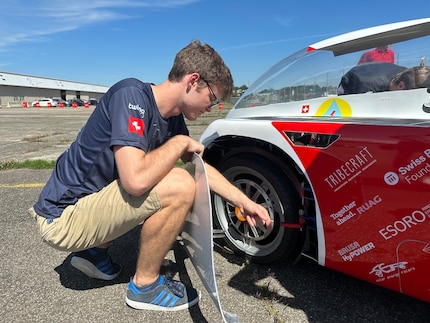
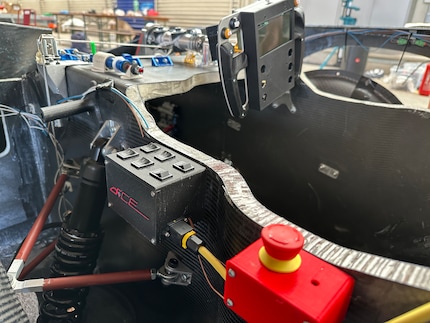
The single-seater, which the budding engineers spent months designing and building, weighs in at just over 150 kilogrammes. That includes the battery cells, but not the weight of the driver. This will give it a top speed of over 100 km/h. Even so, the 3,000 kilometres will certainly feel long in the cockpit. In any case, the driver’s head will get just as much exposure to the Australian sun as the four square metres of solar cells on top of the car.
This is where energy for the five-kilowatt (or just under seven horsepower) electric drive is generated, while excess electricity is directed by the electronics into the 20-kilogramme battery. The rules of the race state that the crew has to remove the battery every night and hand it over to the jury. This is to prevent one team from potentially gaining an advantage by charging the battery overnight. So that the battery can be removed from the car as easily as possible, student Clara Nörenberg files down a bothersome edge on the carbon cladding. Issues like this only come to light when testing the car in practice.
At the moment, it feels like every problem we solve, two new appear.
A bit of tinkering is also necessary to cover the car, i.e. to mount the roof. Sporting super-efficient solar cells made by Meyer Burger Ltd, the roof needs to be able to open to allow the driver to get out. The job of installing it lies with Clara Nörenberg and Gian-Leo Willi. Hinges and latches are screwed to the base structure. Finally, the roof is attached to the car. The power generated by the solar cells can drive the permanent magnet motor on the back wheel.
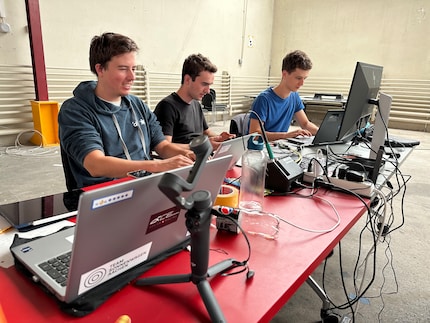
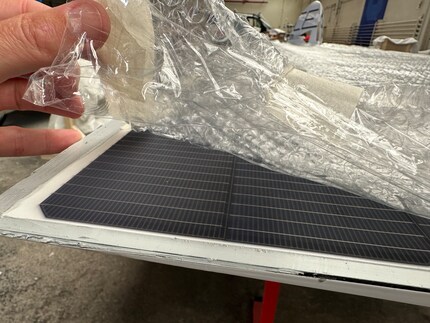
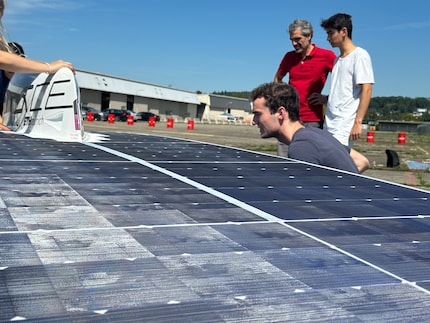
Since the «safety first» principle applies to every drive, driver Jonas Rudin isn’t allowed behind the wheel yet. The seatbelt is still missing one part, and without that, the car isn’t going anywhere. Not even on a cursory test drive. But this challenge, too, is resolved in the end. The students now have a whole network of partners and assistants should they ever need anything else.
However, the team still have a hundred other things ahead of them. Making space at the back of the car for an official Australian licence plate, for instance. This is because the solar-powered race cars need a road permit for the event, including a licence plate. The team will attach it where the blue L-plate currently is. Although the licence plate might make the drag coefficient slightly worse, they’ll be proud to be able to mount it in October.
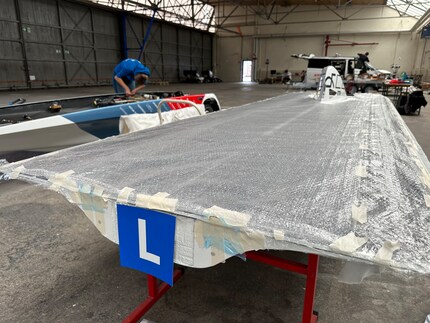
The ETH team also provides insights into the creation process of the solar race car on Instagram. General information about the World Solar Challenge can be found here, or you can visit the ETH team’s official homepage here.
Header image: Martin JungferJournalist since 1997. Stopovers in Franconia (or the Franken region), Lake Constance, Obwalden, Nidwalden and Zurich. Father since 2014. Expert in editorial organisation and motivation. Focus on sustainability, home office tools, beautiful things for the home, creative toys and sports equipment.
Interesting facts about products, behind-the-scenes looks at manufacturers and deep-dives on interesting people.
Show all
Background information
by Martin Jungfer
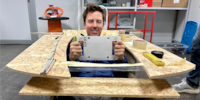
Background information
by Martin Jungfer

Background information
by Dayan Pfammatter